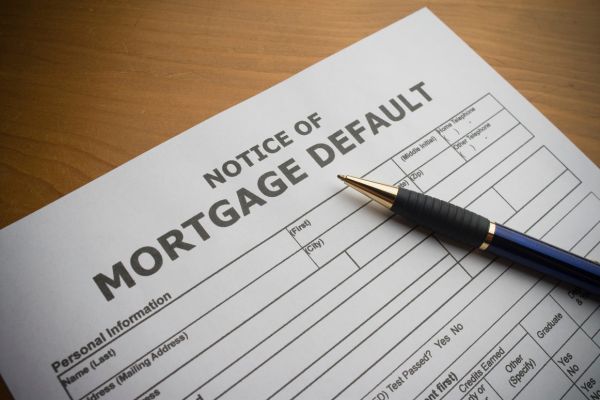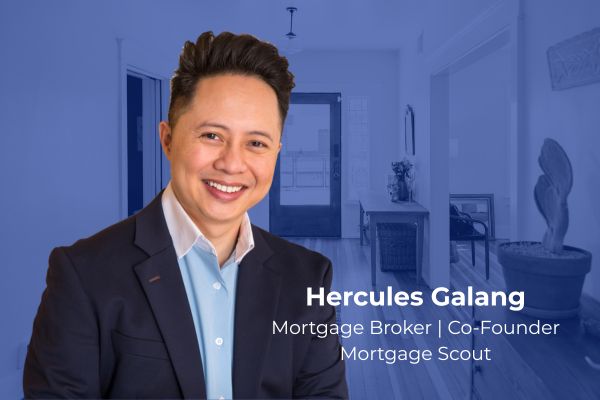Freedom to Retire Your Way: The Lifestyle Perks of a Reverse Mortgage
06/02/25

What if we told you that there’s a type of mortgage where the bank pays you, not the other way around?
For many, that idea sounds almost too good to be true. Mortgages, after all, are usually associated with monthly bills and long-term debt.
But reverse mortgages flip that script. They’re not about owing more, they’re about unlocking what you already own.
In a city like Toronto, where property values have soared for decades, this overlooked financial tool is helping homeowners aged 55+ enjoy the lifestyle they’ve worked so hard to achieve, without giving up their home.
We turned to Hercules Galang, a trusted mortgage professional with decades of experience, for a candid look at how reverse mortgages work and who they can benefit most.
- What Is a Reverse Mortgage?
- Why Reverse Mortgages Are Great for Toronto's Seniors
- Looking for more insights and helpful tips? Subscribe to get these delivered straight to your Inbox!
- Who Is Eligible for a Reverse Mortgage?
- How Does the Process Work?
- Benefits and Real-Life Scenarios
- Common Misconceptions
- When a Reverse Mortgage Might Not Be the Right Choice
- Final Thoughts from The Smith Proulx Team
What Is a Reverse Mortgage?
A reverse mortgage allows homeowners aged 55 or older to access the equity in their home without having to sell or make monthly mortgage payments. Unlike a traditional mortgage, where you make payments to a lender, with a reverse mortgage, the lender pays you.
As Hercules Galang, a seasoned mortgage broker with over 30 years in the financial industry, explains,
“With a reverse mortgage, the title stays in your name. The lender puts a lien on the property, just like a regular mortgage, but you are not required to make monthly payments.”
This makes it especially appealing for retirees on fixed incomes who wish to remain in their homes. Whether the funds are needed for renovations, healthcare, or simply to enhance lifestyle, reverse mortgages offer a flexible financial option.
Why Reverse Mortgages Are Great for Toronto’s Seniors

For Toronto homeowners who’ve spent decades working hard and building a life in the home they love, a reverse mortgage can be a practical solution that preserves both lifestyle and stability. As Hercules Galang puts it, many retirees are “house rich but cash poor.” They’ve paid down their mortgage, watched their property’s value rise, but now find their income limited in retirement.
Rather than being forced to sell or downsize, a reverse mortgage allows them to stay where they are and continue enjoying the life they’ve worked for. Whether it’s maintaining a garden, entertaining family, or simply waking up in a familiar neighbourhood like High Park or Bloor West Village, the emotional and lifestyle value of staying put is immeasurable.
“Imagine having to downsize to a smaller condo or move out of the city just because your pension doesn’t stretch far enough,” says Galang. “That’s not what most people want after 40 years of hard work. A reverse mortgage helps them preserve their quality of life, in the home they’ve earned.”
For many, it’s not just about money, it’s about dignity, comfort, and freedom in retirement. With no monthly repayments and the flexibility to use the funds however they wish, Toronto’s seniors are turning to reverse mortgages as a smart, empowering solution.
Looking for more insights and helpful tips? Subscribe to get these delivered straight to your Inbox!
Who Is Eligible for a Reverse Mortgage?

To qualify, you must be at least 55 years old and own a home in Canada. The amount you can borrow depends on your age, the value of your home, and its type and location. Generally, the older you are, the more you can access.
“On average, for people in their early 70s, lenders offer around 40% of the home’s value,” says Galang. “But they will never lend more than 55%.”
This built-in buffer ensures that the loan doesn’t exceed the home’s value over time, especially in a city like Toronto, where property values historically trend upward.
How Does the Process Work?
The application for a reverse mortgage is more straightforward than a traditional mortgage. While there is some paperwork, it’s generally limited to proof of age, a property tax bill, and a mortgage statement if there’s an existing loan.
“Banks with reverse mortgage products don’t do a deep dive on income like traditional lenders do,” Galang explains. “Instead, the focus is on the borrower’s age and the home’s value.”
Applicants are also required to receive independent legal advice (ILA) before finalizing the agreement. This is not just a recommendation, it is a mandatory requirement by Canadian lenders. ILA ensures that borrowers fully understand the terms, are mentally competent to make financial decisions, and are not being coerced. Lenders such as HomeEquity Bank and Equitable Bank require ILA as a standard condition.
Terms can be set for one to five years. When a term ends, it can be renewed like a traditional mortgage. Borrowers should be aware that repaying the loan early within a term can trigger fees, 5% in the first year, with fees decreasing each subsequent year. Specific penalties vary slightly between lenders, such as HomeEquity Bank and EQ Bank.
Borrowers may receive funds as a lump sum or through regular advances, functioning similarly to a supplementary income stream. Interest is added to the loan and typically compounds semi-annually. Although interest rates on reverse mortgages tend to be higher than traditional mortgages, no monthly payments are required for as long as the homeowner lives in the property.
A key benefit is the “no negative equity guarantee” offered by lenders like HomeEquity Bank. This ensures that if the loan balance ever exceeds the value of the home upon sale, the homeowner or estate will not be required to pay the difference.
Benefits and Real-Life Scenarios

One of the biggest advantages is the freedom it offers. There are no regular repayments required, and homeowners can stay in their property as long as they wish.
“I’ve helped clients use reverse mortgages to renovate, pay for healthcare, help their children with a down payment, or even just enjoy retirement,” says Galang. “It’s like an early inheritance, and it doesn’t impact CPP or OAS.”
In one touching example, Galang helped a widow whose bank demanded repayment of a $220,000 mortgage after her husband passed. She had minimal income and no way to qualify traditionally. “She was panicking,” he recalls. “We secured a reverse mortgage that not only paid off the existing debt, but gave her enough to do some upgrades to the home she loved.”
In another case, a homeowner in Forest Hill accessed $1.2 million from a $3 million property. “He wanted to travel and enjoy life. It gave him the financial room to do just that.”
From practical upgrades to major life goals, reverse mortgages can turn home equity into a powerful financial tool for seniors in communities like Baby Point Gates and Runnymede, where homes have appreciated significantly in value.
Common Misconceptions

One of the most widespread myths is that the bank takes ownership of your home. Galang is quick to dispel this,
“People fear the bank will own their home or take it away. But that’s simply not true. The home remains in your name, and because there are no required payments, there’s no risk of default.”
Another misunderstanding involves inheritance. Some beneficiaries may worry a reverse mortgage will diminish their future inheritance. “That’s true to an extent,” says Galang. “But many children would rather see their parents live well in retirement than stress about leaving behind the maximum dollar amount.”
The idea that reverse mortgages are unsafe also lingers, often based on outdated U.S. models. In Canada, however, the industry is tightly regulated. “Lenders here won’t let you borrow more than 55% of your home’s value. There’s a cushion built in, plus legal advice is mandatory.”
When a Reverse Mortgage Might Not Be the Right Choice
While reverse mortgages offer substantial benefits, they aren’t ideal for every situation. Galang warns against situations where the homeowner is being pressured by family members, “If I sense someone is being pushed into it for someone else’s gain, that’s a red flag. The funds should be used to improve the homeowner’s life, not to prop up someone else’s finances.”
Reverse mortgages may also be less suitable if the homeowner plans to move soon or if significant estate planning is a top priority. “For those focused on leaving the highest possible inheritance, other financial tools might be better suited,” says Galang.
Still, the core benefit remains clear. As Galang puts it, “If someone wants to stay in their home, maintain their lifestyle, and stop worrying about money, this can be a lifesaver. It’s about quality of life in retirement.”
Final Thoughts from The Smith Proulx Team

A reverse mortgage can provide financial peace of mind in retirement for many homeowners in west Toronto neighbourhoods like High Park and Swansea. It’s not about giving up your home, it’s about gaining freedom and flexibility.
At The Smith Proulx Team, we believe every homeowner deserves the opportunity to retire with confidence and comfort. Whether you’re looking to stay in the home you love, free up equity to support your lifestyle, or just want to understand your financial options, we’re here to help.
For personalized guidance on your home’s value, call us at 416-769-6050. If you’re ready to explore how a reverse mortgage could work for you, we’re happy to introduce you to Hercules Galang, a trusted expert with a deep understanding of these solutions and a genuine passion for helping people.
Sign Up For Our Newsletter
Looking for more great real estate content? Get it delivered to your inbox with our newsletter!




